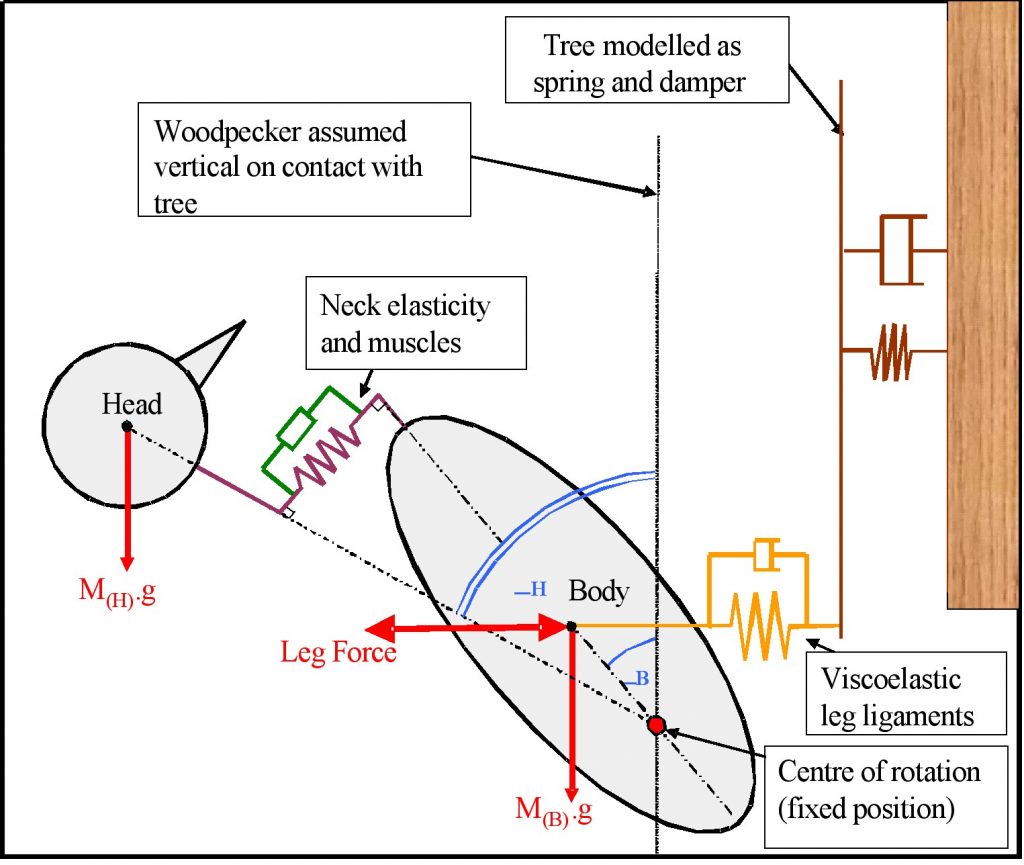Mention the words ‘woodpecker’ and ‘biologically-inspired design’ and most people think ‘crash helmet’. How does the woodpecker manage to hit its beak so hard on the tree yet not injure its brain, or fall off the tree? Wrong question. The woodpecker’s beak hits the tree perpendicularly so that there’s minimal rotational acceleration exerted on the brain, which is tightly retained within the skull. If the brain were to rotate, nerves and blood vessels would be injured, which happens in road accidents. In addition the bird closes its eyes, just before its beak hits the tree, so that they don’t pop out!
As the woodpecker’s beak hits the tree, it’s moving at about four metres per second, reaching this speed over a distance of about five cm. The proper question to ask is why does the woodpecker accelerate its head like that? The answer is that the woodpecker is a bird. It flies, so needs to be light. But if it hammers into wood, you’d think its head would have to be heavy – like a hammer. That’s a classic trade-off: light-weight to fly versus heavy-weight to hammer. The trade-off is resolved because a light object can deliver the impact energy of a hammer if it hits the target at high speed so that the inertial forces are similar. This begs the question: how does the woodpecker manage to accelerate its head so violently?


Video footage shows that the woodpecker starts each strike by pulling its body towards the tree with its leg muscles, effectively rotating it about a horizontal axis. The head, on its long neck, follows like a whiplash 50 milliseconds later. In this fashion the woodpecker can use its body muscles to accelerate its head. The tail feathers are very robust and pressed tightly against the tree. They add to the acceleration by bending and storing elastic energy, releasing it as they unbend in the first stages of the stroke.These combined actions turn the essentially sinusoidal rocking of the woodpecker’s body into an asymmetric sawtooth pattern of the head’s motion, thus amplifying the power available. This technique yields 20 times more impact energy than the neck muscles could. So just as, when delivering a ball, a bowler rotates the body with the arm lagging and then accelerating the action, so the woodpecker is ‘bowling’ its head at the tree. It delivers fracture energy kinetically rather than using inertia like a hand-held hammer.
This suggests a design for a light-weight hammer. A motor in the handle produces an oscillation that drives a flexibly attached, low mass hammer head rapidly back and forth, delivering a succession of high-speed blows to its target. It’s important that the motion is asymmetrical like the woodpecker’s
Such a hammer can work in confined or difficult spaces. Let me know if you build a prototype!
Reference
Vincent, J F V, M N Sahinkaya, and W O’Shea. 2007. “A woodpecker hammer.” Proceedings of the Institution of Mechanical Engineers, Part C, Journal of Mechanical Engineering Science:1141-1147.
This article appeared in Professional Engineering 2022, Issue 6
